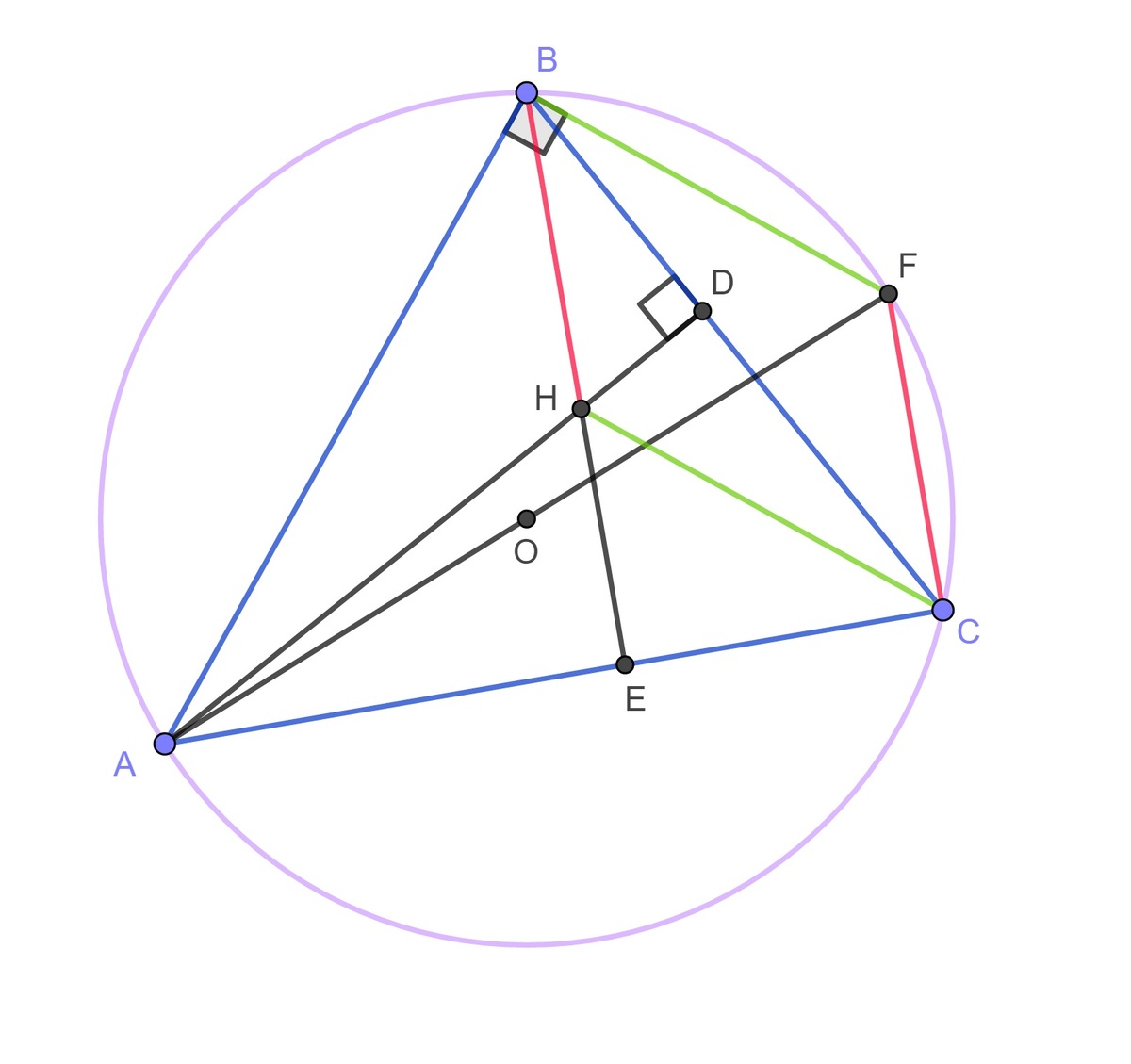Orthocentre distance to triangle vertices as a function of triangle angles and side lengths.

While solving one of Brilliant problems I came across an interesting property of an orthocentre which I have not thought of before, so I decided to share it with Brilliant community. Let's consider a triangle with circumcentre , orthocentre , radius , . Let's create circumcircle with diameter and connect points . (from Thales' Theorem) and ( is part of the altitude of the triangle) . For the same reasons we can state that . This means that quadrilateral is a parallelogram and and . It is also follows from Inscribed Angle Theorem that and .
For the same reasons the following holds true:
Because of special cases for right angles, It is better rewritten as:
Easy Math Editor
This discussion board is a place to discuss our Daily Challenges and the math and science related to those challenges. Explanations are more than just a solution — they should explain the steps and thinking strategies that you used to obtain the solution. Comments should further the discussion of math and science.
When posting on Brilliant:
*italics*or_italics_**bold**or__bold__paragraph 1
paragraph 2
[example link](https://brilliant.org)> This is a quote# I indented these lines # 4 spaces, and now they show # up as a code block. print "hello world"\(...\)or\[...\]to ensure proper formatting.2 \times 32^{34}a_{i-1}\frac{2}{3}\sqrt{2}\sum_{i=1}^3\sin \theta\boxed{123}Comments
Some criticisms:
You will need to expand on your proof. Specifically, say that BF⊥AB because of Thales' theorem and that CH⊥AB, since the line joining CH is an altitude of the triangle ABC through C.
What is R? Please define your terms precisely. I will also make the same argument with the upper-case and lower-case a's, b's and c's... are they points? Angles? Distances?
All in all, an unclear proof to an interesting but probably well-known result (I do not think this is new, though; this would be something that was well-known to probably Euler or Monge, but I would have no clue on the historical context). I would be interested to see if this result generalises to arbitrary dot product geometries.
P.S. If I find a result in the rational analog for not only the triangle but also the tetrahedron, I'll be sure to credit you!
Log in to reply
The symbols are commonly used as a standard, but I added the information. The very reason I wrote that note is that I have not seen that information before. I am not claiming it is new. Most likely it is not. It is for the information for other members of Brilliant. It is nothing advanced, rather simple, but could be useful in some instances. I was not going for a strict proof, rather sketchy one. Just sharing information with others. For more information on orthocentre properties you can also check my solution for problem
Log in to reply
No worries. I am currently finishing my thesis in three-dimensional rational geometry, but when I’m done I have two papers to write on tetrahedron centres in rational geometry. Will have a look at your stuff when I’m onto it.
Wow ! That's pretty cool . Please keep up the good work 😀